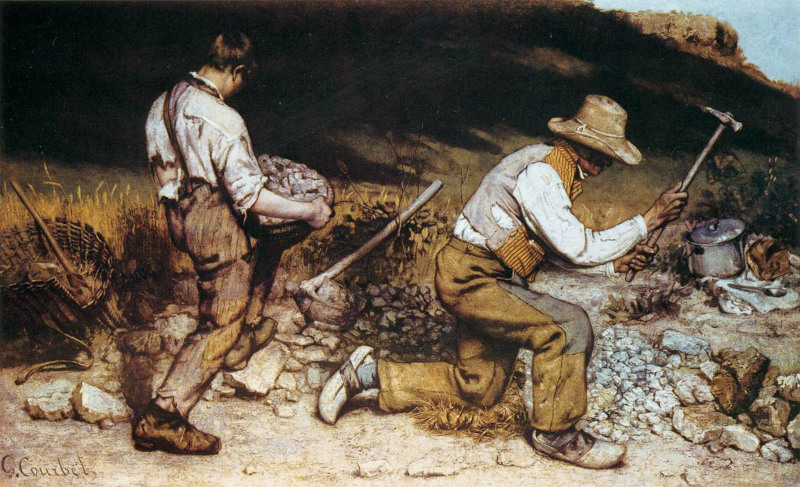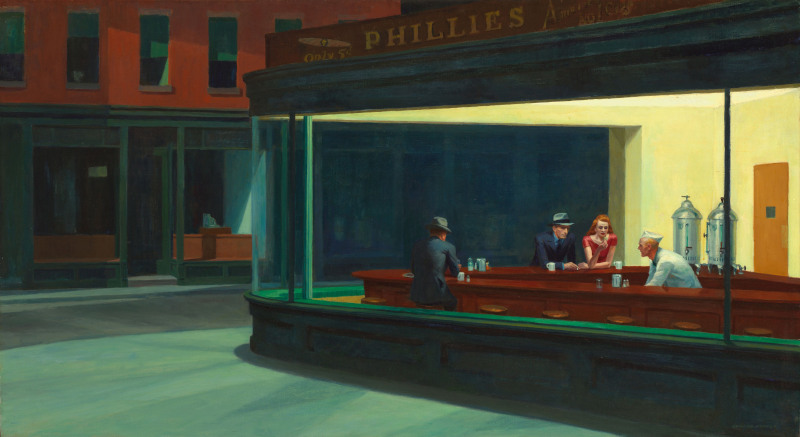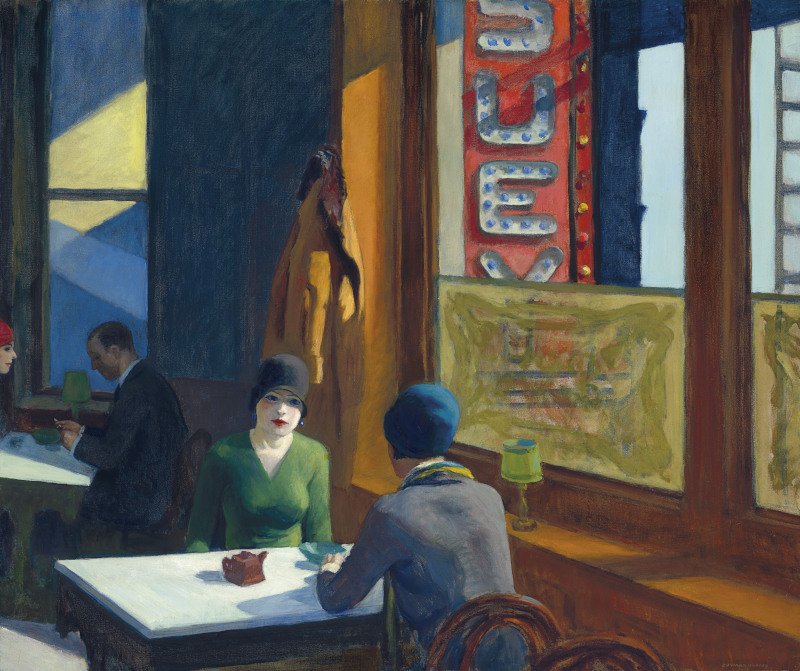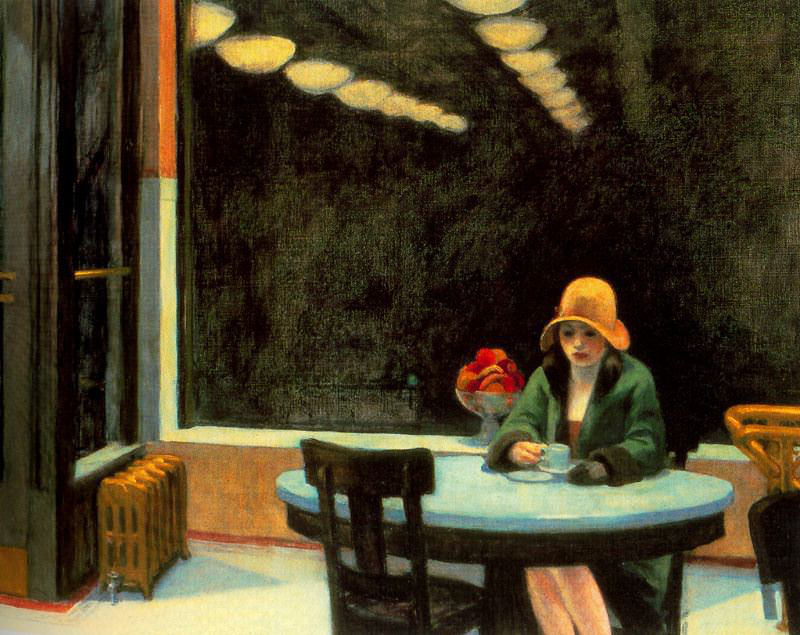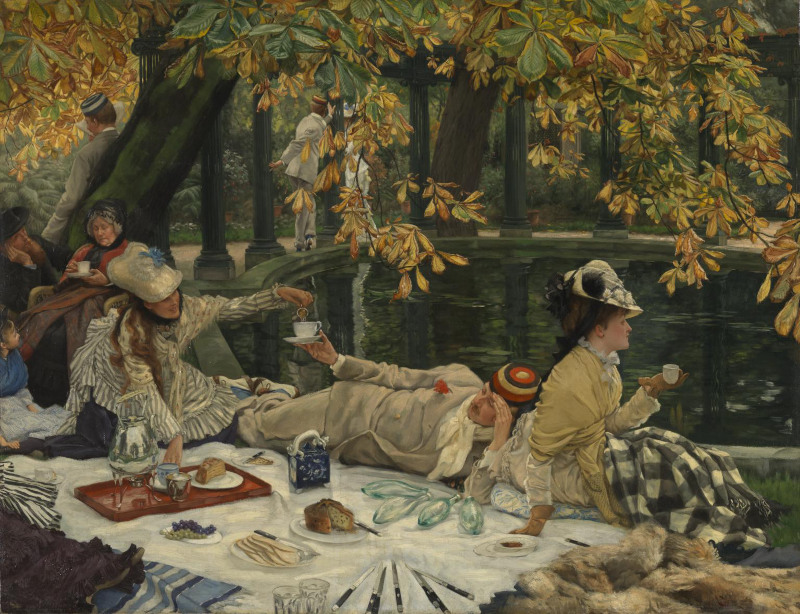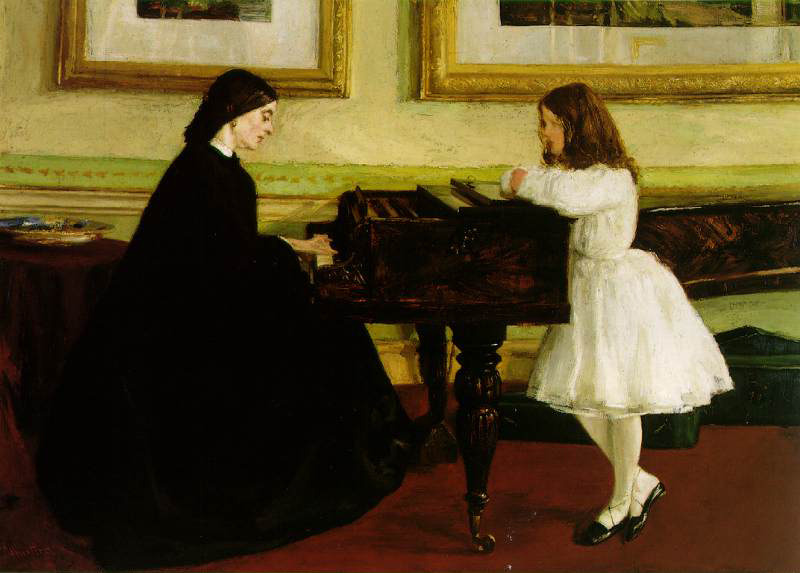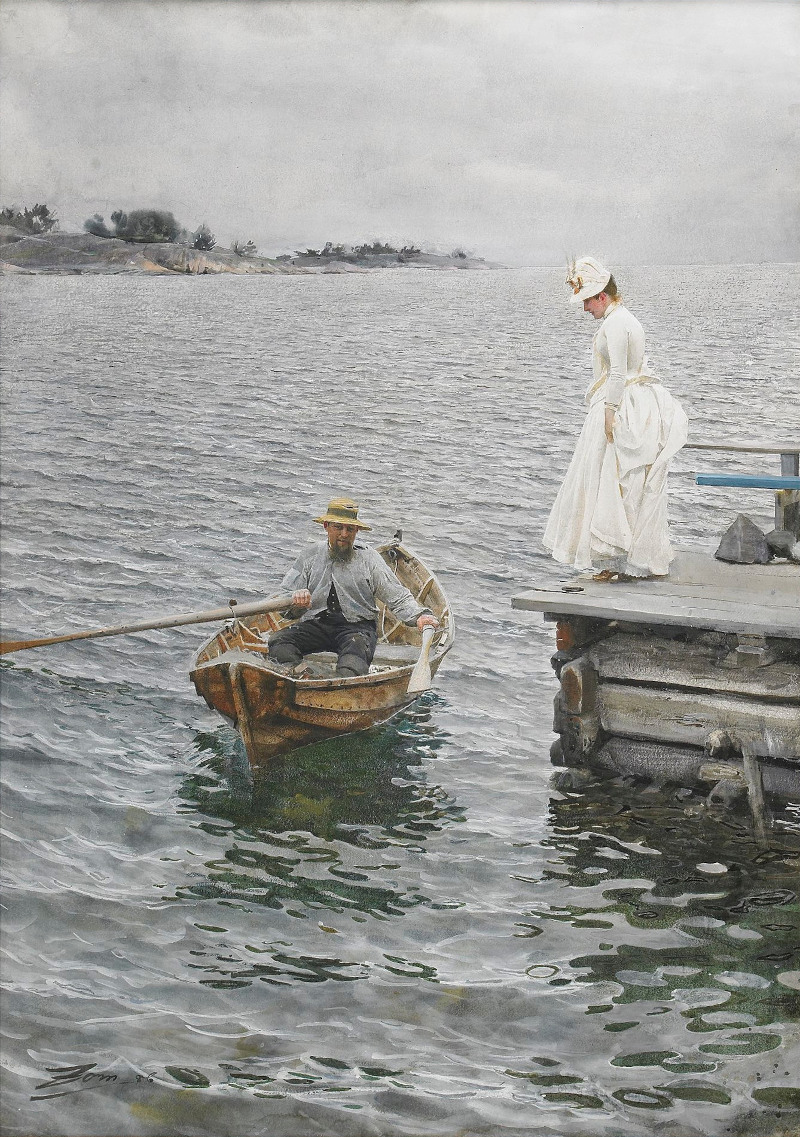Realism artists have combined depictions of real life with impressive technical skills, with this movement spreading right across the world, and spanning several centuries.
Introduction to Realism Art
Realism was an artistic movement which aimed to accurately and realistically depict the real world, rather than giving an artist's own edited version of it. Realism aims to depict from reality as accurately as possible, but the term itself mainly is used to refer to a particular period of the second half of the 19th century. Artists outside of this era who worked in the same manner may not therefore be included in the group.
Additionally, the Realism art movement had particular content that it would normally focus on, with the lives of ordinary folk being the most common. An honest portrayal of the common man, often hard at work, would feature in these interesting depictions and Realism paintings continue to give us an excellent visual survey of life in the 19th century in a variety of different nations. France was the original hub of Realism, but it would later spread to other European nations, as well as the US.
List of Famous Realism Artists
We have pulled together a list of the most famous Realism artists from across the globe, providing summaries of their careers as well as providing a number of images of their work. Realism remains popular today, in part due to the precision of the technical work, but also in its focus on ordinary life, allowing us to go back in time with some of the stunning visual representations that are included below. The 19th century was also a time of major change within Europe, and some of this evolution can be seen in the various paintings displayed in this article.
Realism remains a significant part of 19th century European art, with many of the names listed below being regarded as amongst the most significant contributors across that entire period. Their paintings remain in our thoughts despite the impact of other movements at around that time such as Academic Art, Impressionism and Post-Impressionism towards the turn of the century.
Gustave Courbet
Gustave Courbet was a highly rebellious individual with a passionate personality which led his desire to reject the methods of Academic art. He held socialist values which led to him focusing on ordinary folk within his paintings, rather than seeking success more easily by portraying the rich and famous. His integrity would later encourage others into the informal group which became known as the Realism artists, and the style would achieve the backing of the public over time.
We see the artist at his most expressive within a self portrait known as Le Désespéré, but his other famous paintings were more in line with the content of Realism, with scenes of the working class, normally in rural areas. The detail and precision of his work could never be ignored, and other highlights included A Burial At Ornans, The Stone Breakers and Bonjour, Monsieur Courbet.
 by Gustave Courbet.jpg) Self Portrait (The Desperate Man) by Gustave Courbet
Self Portrait (The Desperate Man) by Gustave Courbet
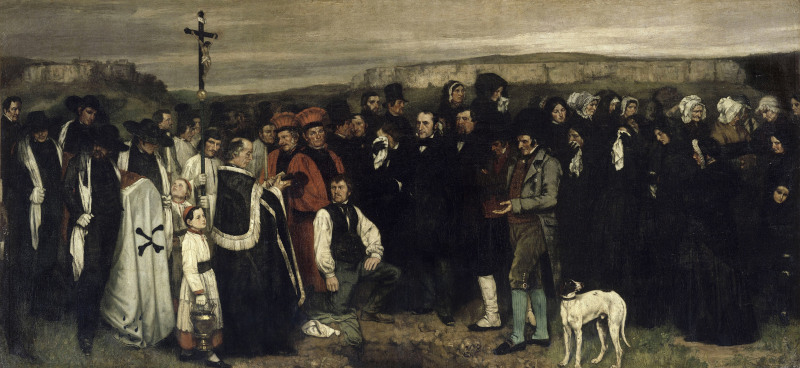 A Burial at Ornans by Gustave Courbet
A Burial at Ornans by Gustave Courbet
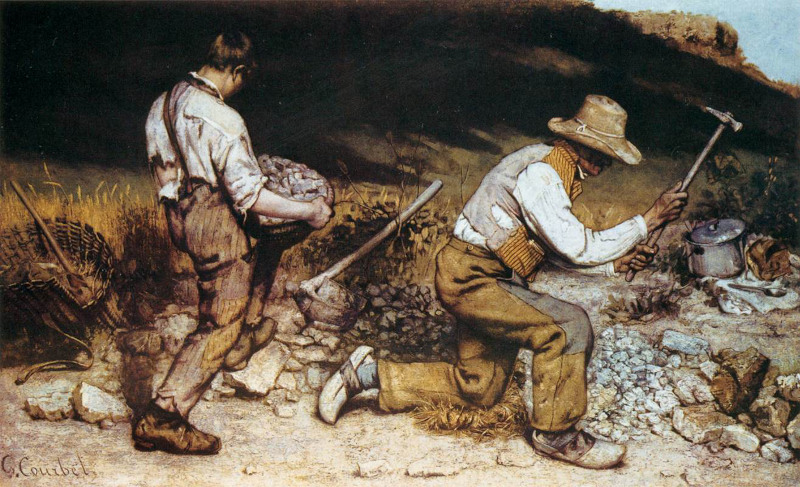 The Stone Breakers by Gustave Courbet
The Stone Breakers by Gustave Courbet
Ilya Repin
Ilya Repin was a highly skilled Russian Realism artist whose career peaked around the end of the 19th century. He produced portraits of a number of famous figures but is best remembered for his large canvases which provided intricate depictions of the working lives of ordinary Russians. Some of the highlights included Barge Haulers on the Volga, Religious Procession in Kursk Province, whilst Ivan the Terrible and His Son Ivan provided a powerful interpretation of historical events.
Russian Realism built up a strong momentum across the 19th century, with this nation contributing many of the leading exponents, falling behind only France. Political changes in Russia also made this type of content entirely appropriate, and helped western Europeans to better understand the daily lives of Russians who they would not meet within their own lives. They would also have been highly impressed by the technical qualities of these painters who recreated details with an extraordinary precision and honesty.
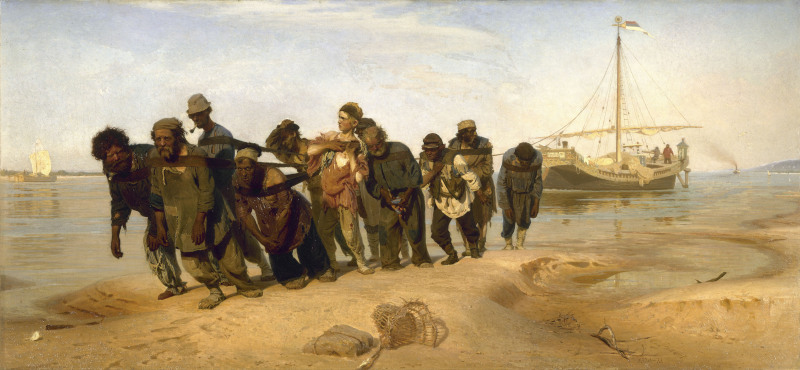 Barge Haulers on the Volga by Ilya Repin
Barge Haulers on the Volga by Ilya Repin
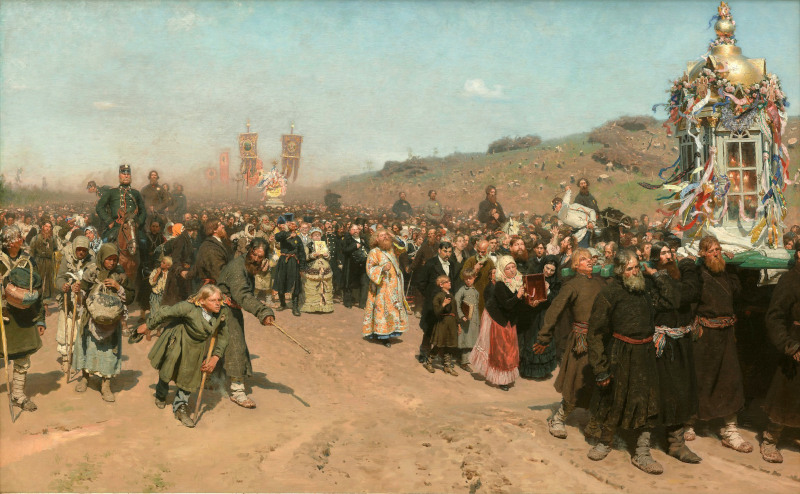 Religious Procession in Kursk Province by Ilya Repin
Religious Procession in Kursk Province by Ilya Repin
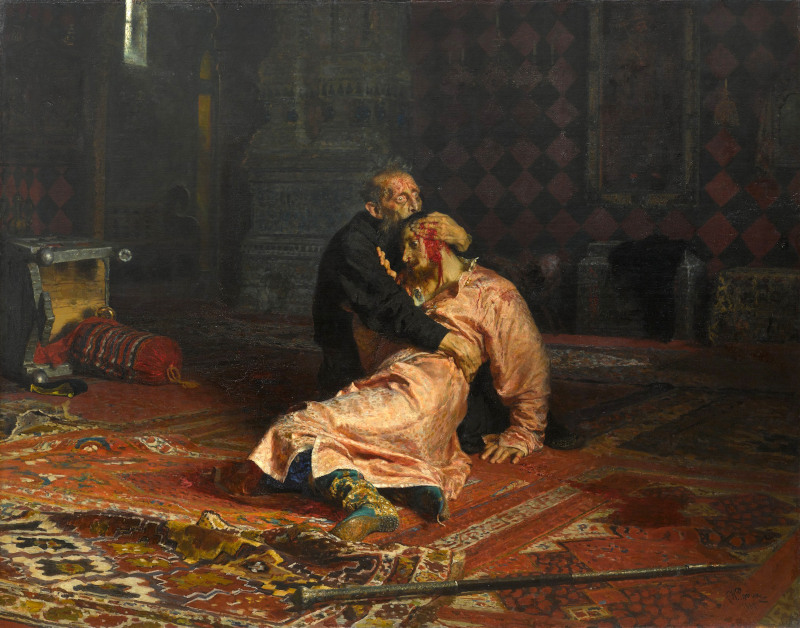 Ivan the Terrible and his Son Ivan by Ilya Repin
Ivan the Terrible and his Son Ivan by Ilya Repin
Edward Hopper
Edward Hopper remains one of the most famous American artists and produced atmospheric scenes which were unique to his career alone. Hopper touched on the loneliness of modern life, and typically featured single figures contemplating life on their own. Even his group paintings still contained elements of separation from the rest of society, with Nighthawks becoming one of the most famous American paintings of all time. There were also other well known works such as Morning Sun, Chop Suey and Gas.
Hopper was a talented draughtsman who would also depict some of the same scenes using pencil and chalk, and perhaps found a relaxing mindset by covering content such as this. One can immediately feel part of his scenes, as we observe others contemplating life, and some might be reminded of Friedrich's classic Romanticist painting, namely Wanderer above the Sea of Fog, where we witness someone looking off into the distance - potentially, this might have been an influence on Hopper, even though his Realism style was somewhat different to the classic German master.
Winslow Homer
Winslow Homer was an impressive American painter who is best remembered for a number of seascape artworks, each of which included figurative depictions of life on the sea. Highlights included Snap the Whip, Breezing Up and The Fog Warning, with Homer achieving success across the US as his reputation soared. He wanted homegrown artists to be treated with respect, as previously many across the country had instinctively focused on European artists instead. By the end of the 20th century, this direction of influence had entirely reversed, with European Contemporary artists now looking across for inspiration from America.
Homer's work took in the likes of Cape Ann, Massachusetts, and Prouts Neck, Maine, with his paintings helping to promote the beauty of these regions, with many of their qualities still remaining in tact today. He had worked during the American Civil War which perhaps is how he became interested in the lives of ordinary folk, and after the war had ended he chose to capture leisure time instead, which brought a brighter, more positive outlook to his work.
 by Winslow Homer.jpg) Breezing Up (A Fair Wind) by Winslow Homer
Breezing Up (A Fair Wind) by Winslow Homer
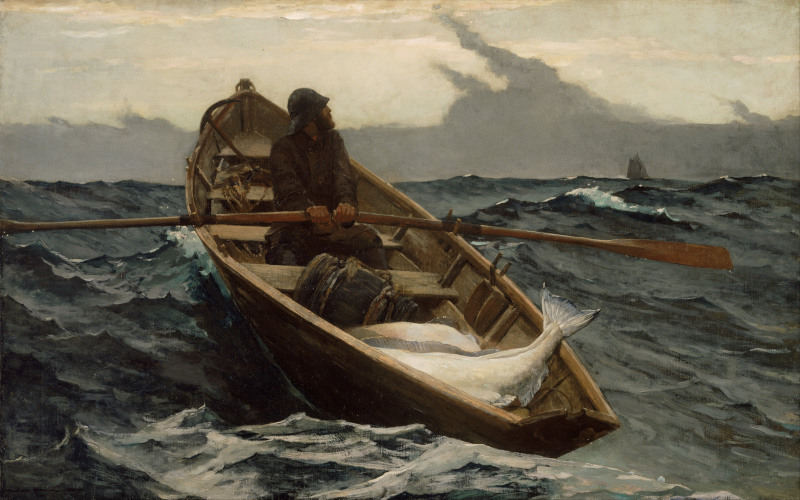 The Fog Warning by Winslow Homer
The Fog Warning by Winslow Homer
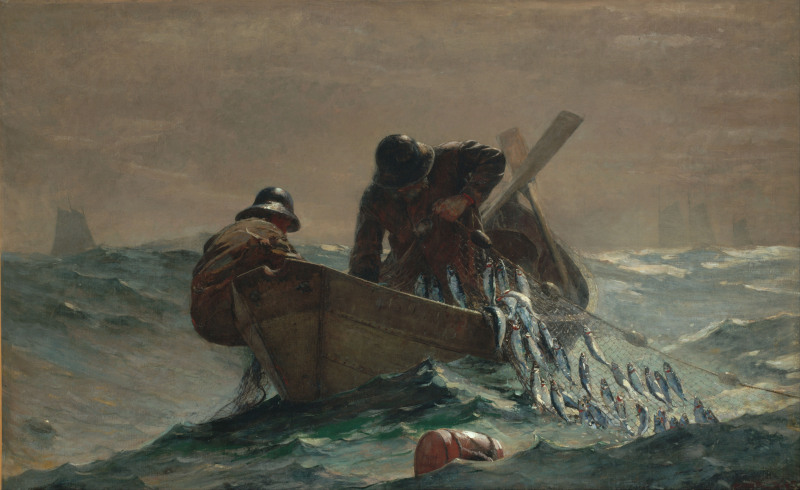 The Herring Net by Winslow Homer
The Herring Net by Winslow Homer
Thomas Eakins
Thomas Eakins was an influential American artist who specialised in portraiture and landscape painting. Eakins liked to experiemnt with lighting, producing portraits in outdoor settings, draped in bright light, as well as indoor settings in which the background would be entirely blackened. Photography was an experimental art form for this artist, and he used it to investigate motion which could aid his oil paintings. Many believe Eakins to have been the most significant American Realism artist, and his work carries considerable value today.
In order to supplement his income whilst experimenting with artistic theories, Eakins agreed to take on a number of high profile portrait commissions which kept his reputation in a prominent position, and provided enough finance that he could also try out less profitable ideas. His work has since been collected by a number of major art institutions across the US, who have valued his contribution to the evolution of American art.
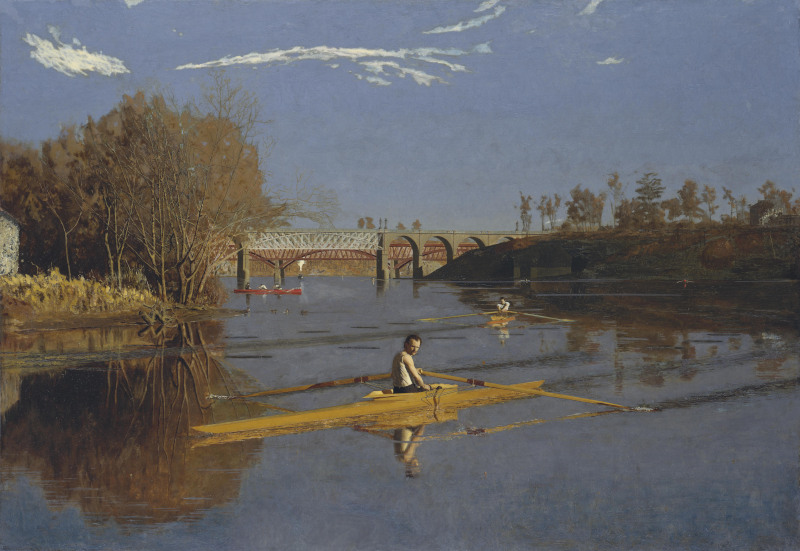 Max Schmitt in a Single Scull by Thomas Eakins
Max Schmitt in a Single Scull by Thomas Eakins
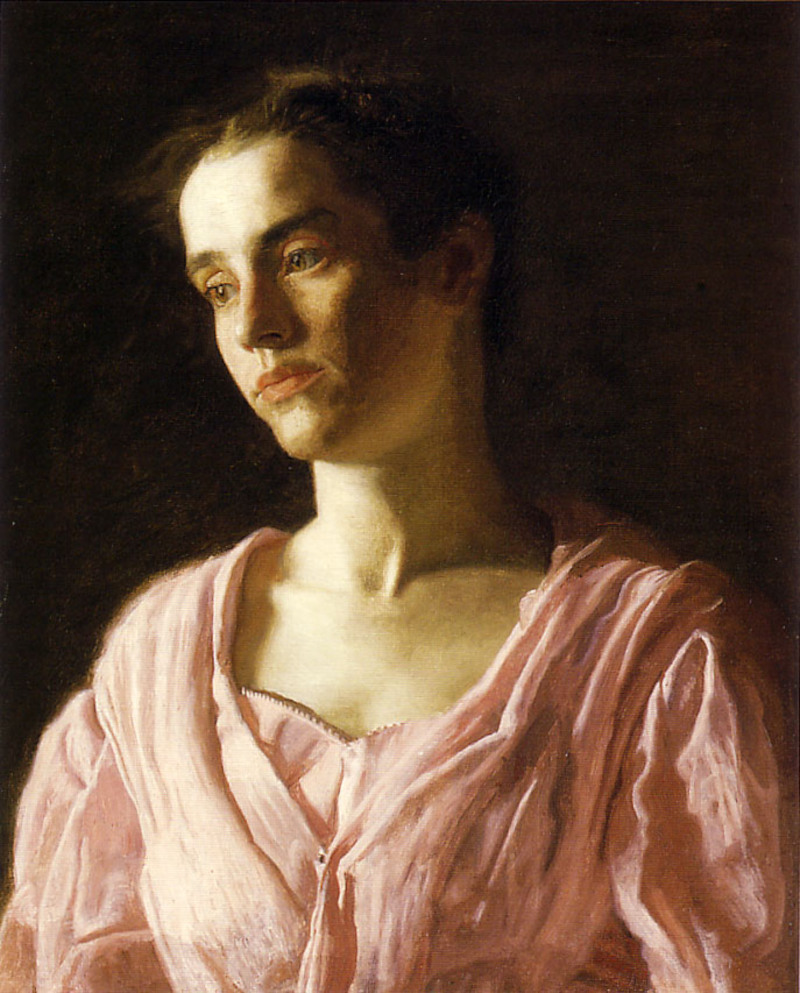 Portrait of Maud Cook by Thomas Eakins
Portrait of Maud Cook by Thomas Eakins
James Tissot
James Tissot was a charming French painter whose style bore some similarities to the Realism movement. He loved to capture scenes of everyday life within his work, but his focus on higher levels of society would separate him from other artists listed in this article. His paintings captured beautiful women enjoying leisure time, and quickly found a strong market throughout Europe. Whilst focusing on the middle and upper classes, Tissot did deliver precise technical work which is where the connection to Realism is at its strongest.
Later in his career Tissot captured a number of scenes based around the Life of Christ which brought a new sphere of work into his oeuvre, and suggested at a versatility that had previously gone to waste. Tissot was a master of figurative art, and his inclusion of high-end fashion made his paintings highly desirable, matching the interests of most major collectors in France at the time. He would also travel elsewhere in the continent in order to observe some of the alternative styles in found in neighbouring countries.
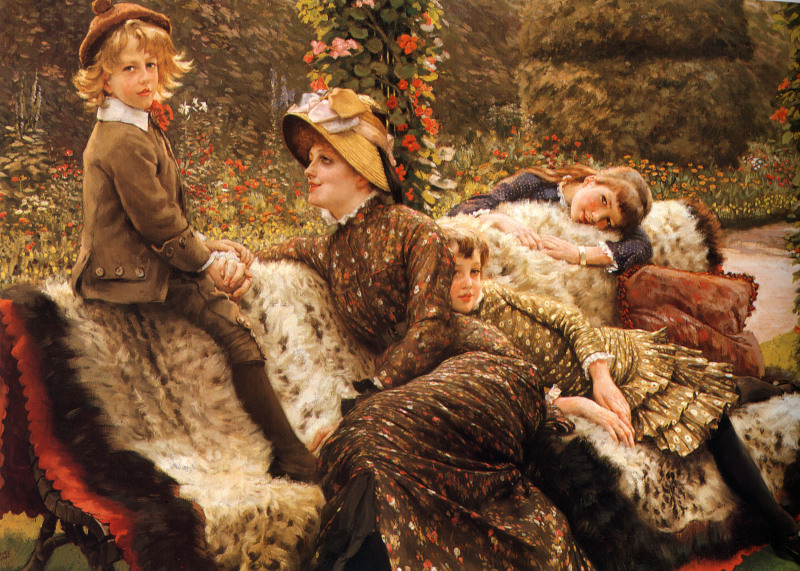 The Garden Bench by James Tissot
The Garden Bench by James Tissot
Jean-François Millet
Jean-François Millet covered the lives of local peasantry in rural France, as part of his role in the Barbizon School. This content, and the realistic nature of his work, immediately brought him into the Realism art movement. The Gleaners and The Angelus showed the reality of life working in the fields, and also helped those from higher, more urban levels of society to understand these hard-working, honest individuals who they may not come across in real life. The figures in his scenes would be used as the main focal points of each composition.
The Barbizon School was an influential group which shared many of the same values as the wider Realism group, but was very much specific to French art. The overall umbrella of Realism art was inspired by an evolution away from French Academic art, but would later spread to Russia, USA, and a number of other significant European nations. It also went wider than just focusing on the working poor, but that it always considered a common trend within it.
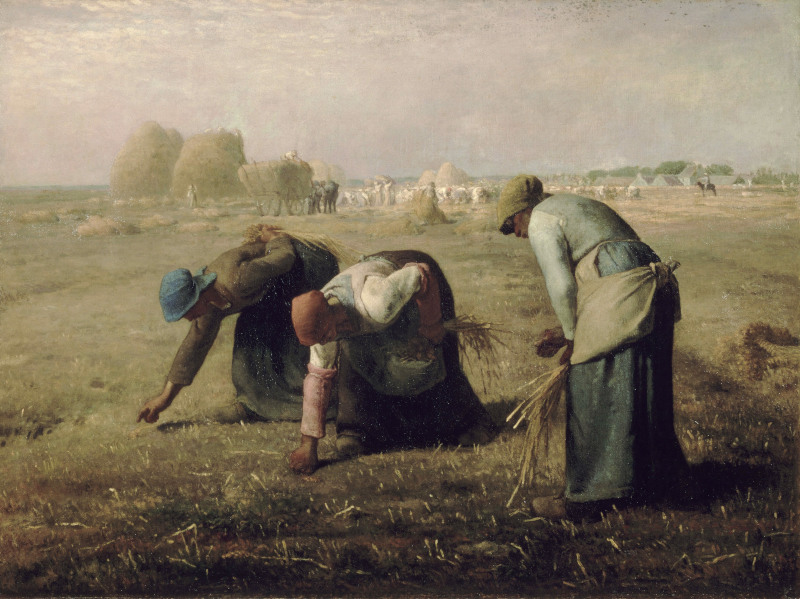 The Gleaners by Jean-Francois Millet
The Gleaners by Jean-Francois Millet
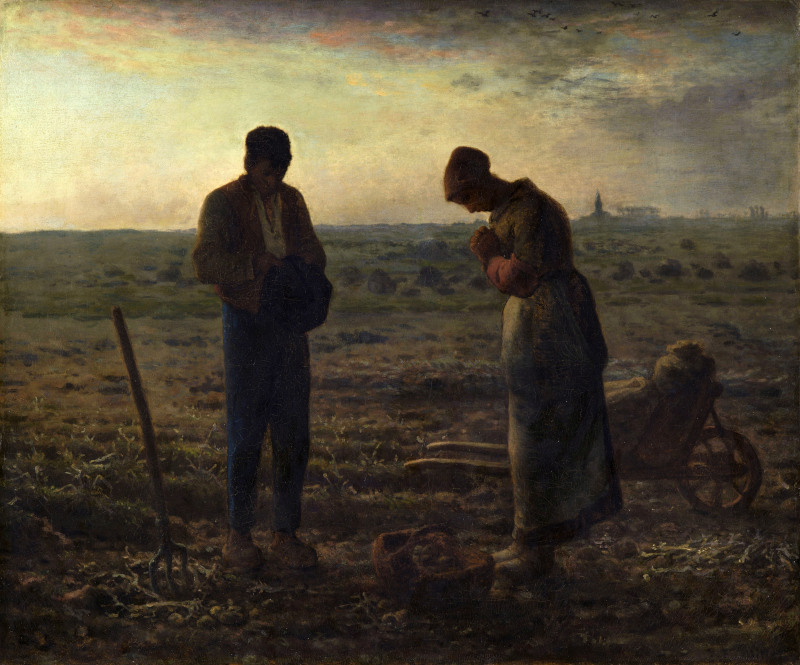 The Angelus by Jean-Francois Millet
The Angelus by Jean-Francois Millet
Rosa Bonheur
Rosa Bonheur was a French Realist artist, and one of the few female artists to be included in this article. She overcame considerable barriers to achieve success with her animal paintings, which mainly focused on life in rural France. The artist was particularly skilled in horse paintings, as well as other common livestock such as cows and bulls. She made copies of animal artists from previous centuries before visiting farms in her local area, studying their anatomical structures and movement in person. Through practice and observation Bonheur was able to achieve an incredible level of accuracy and attracted attention to her work, despite being in a relatively small niche.
Bonheur was also living openly as a lesbian, providing another important aspect in the evolution of art, and helping to open doors to later generations of women of all backgrounds. Her work can stand for itself on quality alone, and she is regarded as a technically impressive painter who produced an extra body of work to complement the overall Realism movement. Her reputation has risen in recent years, with female artists receiving more exposure for their work as means to writing the wrongs of the past by artistic institutions across Europe.
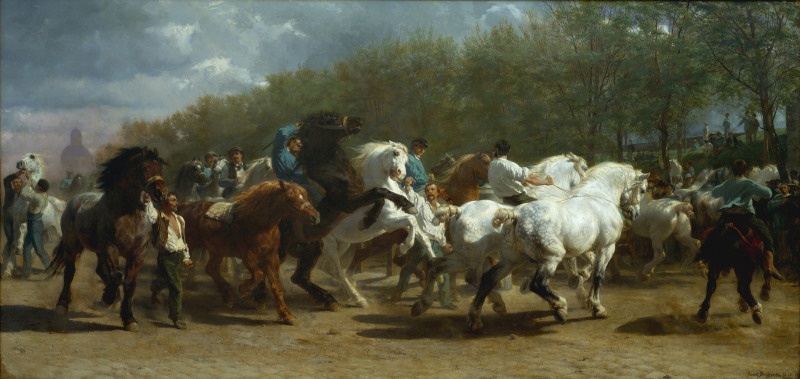 The Horse Fair by Rosa Bonheur
The Horse Fair by Rosa Bonheur
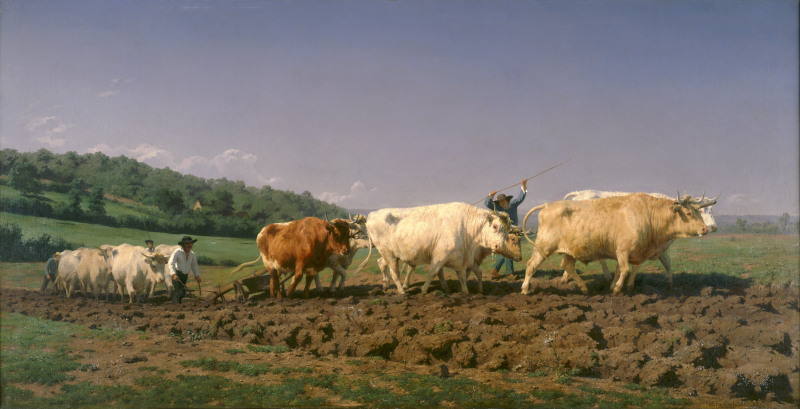 Ploughing in the Nivernais by Rosa Bonheur
Ploughing in the Nivernais by Rosa Bonheur
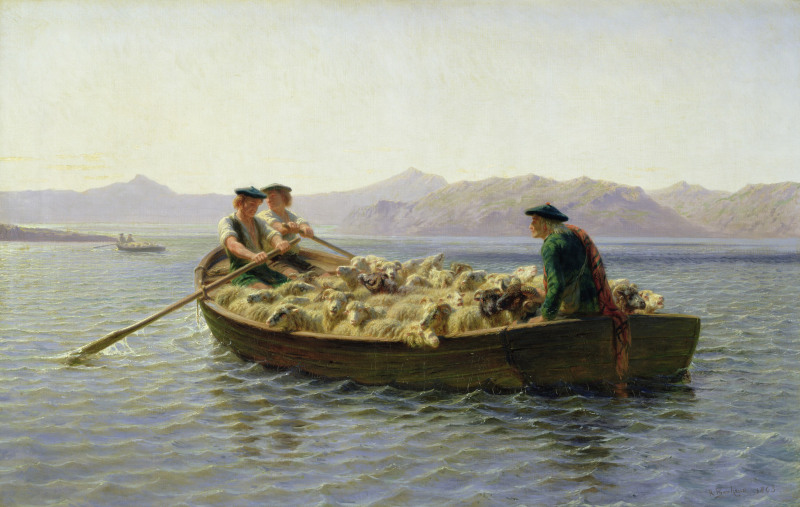 Changing Pastures by Rosa Bonheur
Changing Pastures by Rosa Bonheur
Honoré Daumier
Honoré Daumier created large numbers of intimate scenes of local people, normally in dimly lit locations. He was also a talented printmaker, succeeding in caricatures and unusual sculptures. There were also engravings and lithographs, gifting us a huge body of work which ran into the thousands of artworks. Many of Daumier's paintings would deliver social and political messages, within a style that resembled the earlier work of Francesco de Goya, and his Black Paintings. Critics did not flock to his work, but younger generations of artists, particularly those from the Impressionist group, found much to learn from here.
Daumier was to court controversy, once accused of insulting the King with a caricature which was less than flattering. Incredibly, he was forced to serve six months in prison for this crime, and it appeared unlikely that major collectors would want to be associated with him after this point. His legacy was established by later artists who admired his work and openly commended his achievements, which is how many today tend to find his career.
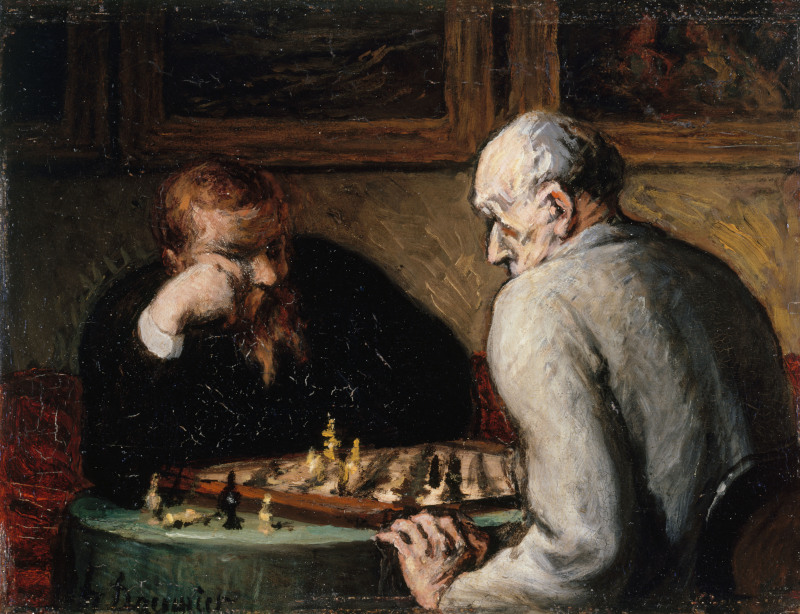 The Chess Players by Honore Daumier
The Chess Players by Honore Daumier
Adolph Menzel
Adolph Menzel was a German Realist painter with a wide variety of content across his oeuvre. Menzel was particularly skilled in his use of light, and was able to produce atmospheric indoor scenes that were amongst his best work. There was also a large number of landscapes and history paintings, as well as a unique approach to composition which helped his paintings to stand out. His work has also been compared to Impressionism at times, at it would be wrong to call him typical of the Realism movement, and was rather just heavily connected to it.
Menzel possessed impressive technical skills which spread across different types of content, and he was accomplished in painting architecture, figurative work, shoulder length portraits and complex landscapes. He could also create interest with simple scenes of domestic life, without even any human involvement and remains one of the most famous German artists of the 19th century, but also one of the hardest to categorise.
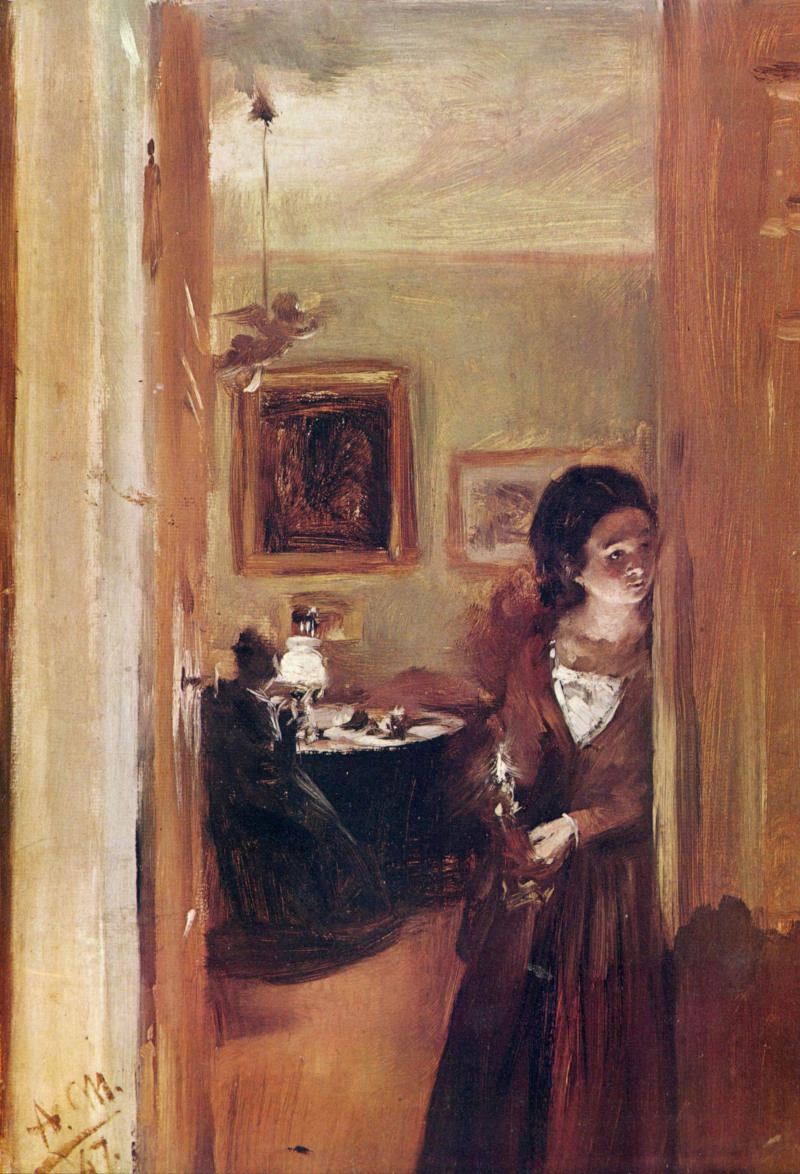 Living Room with the Artist's Sister by Adolph Menzel
Living Room with the Artist's Sister by Adolph Menzel
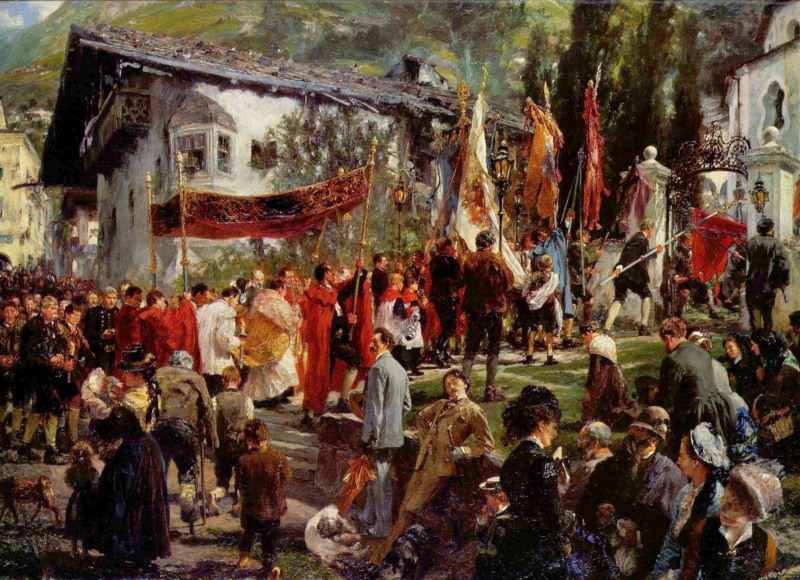 Corpus Christi Procession in Hofgastein by Adolph Menzel
Corpus Christi Procession in Hofgastein by Adolph Menzel
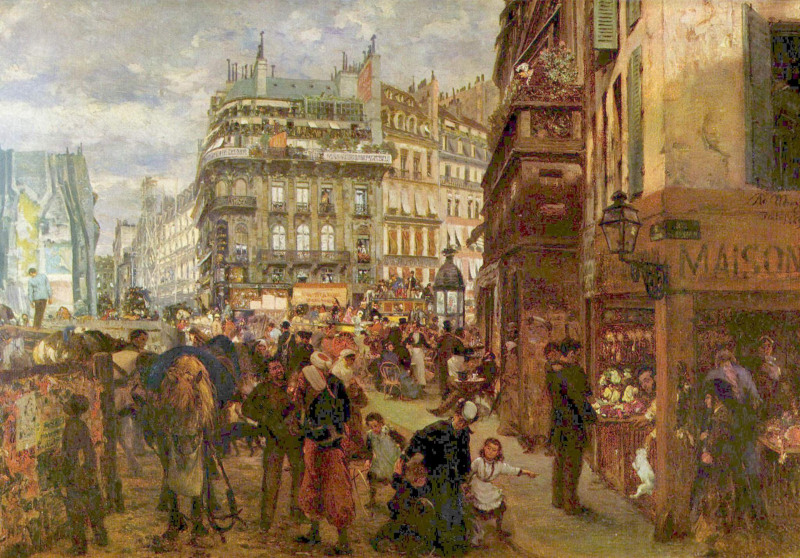 Weekday in Paris by Adolph Menzel
Weekday in Paris by Adolph Menzel
Jean-Baptiste-Camille Corot
Corot regularly featured peasantry within his paintings, having moved away from a career in business in his mid-twenties. He would also incorporate elements of Impressionism and Neo-classical art into his work, but the abundance of landscapes and figurative work had led to him being categorised in the Realism movement. Many of his portraits would capture local people in rural settings, such as reading in a field. Corot also achievd success as a printmaker and spent time travelling in Italy, where another series of landscape paintings was inspired.
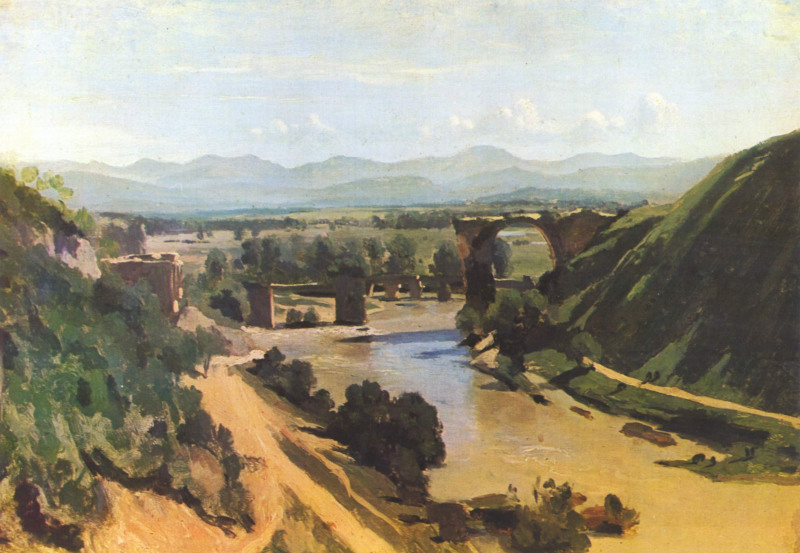 The Bridge at Narni by Jean-Baptiste-Camille Corot
The Bridge at Narni by Jean-Baptiste-Camille Corot
Édouard Manet
Édouard Manet worked in the Realism style early in his career, no doubt influenced by its members who were achieving great success in French art at this time. He produced a number of notable pieces in this manner but over time would slowly transition into a more Impressionist manner, and it is for that that he is most well known today. Manet initially focused on fringe community figures in his work, and this suited the Realism approach, with one notable piece being The Absinthe Drinker. Manet was clearly interested in the lives of ordinary folk, but after a number of years he started to focus on the middle and upper classes instead.
Manet continued to broaden his oeuvre, taking in history paintings of famous battles, many cafe and bar scenes, as well as some charming portraits of his own family members. Most continue to regard him as a key member of the Impressionist movement, but he was much more than that in truth, and was highly memorable for his full length portraits which were completed in a variety of brighter and darker color schemes.
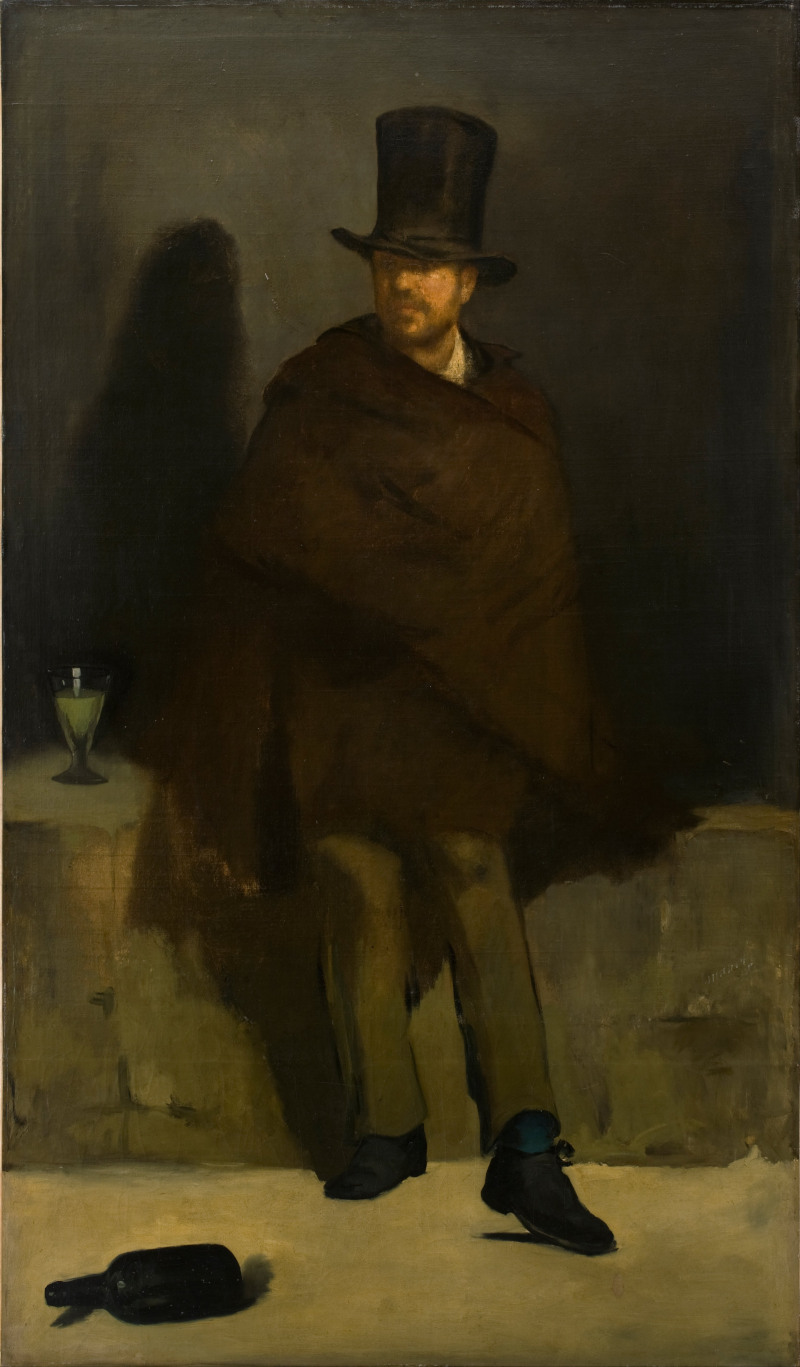 The Absinthe Drinker by Edouard Manet
The Absinthe Drinker by Edouard Manet
James Abbott McNeill Whistler
Whistler was part of the Tonalism movement but did paint in the Realism manner in the 1850s, whilst living in London. At that time, Realism was dominant within the city's art scene, as a direct influence from French painters. Whistler would have been in his mid twenties at this point, and as his career developed he moved on from Realism. The dark tones, however, persisted throughout his oeuvre, other than for the occasional example such as his work in The Peacock Room.
George Bellows
George Bellows was a key member of the American realism movement and perfectly captured city life in America at the start of the 20th century. Bellows also produced a large number of landscape and portrait scenes, and had a unique style which was contemporary in its application of paint. Dempsey and Firpo, held at the Whitney Museum of American Art is probably the most famous Boxing painting of all time, and represents the artist's desire to take on a variety of content across his career. Despite only living into his early forties, the productive nature of this artist helped him to achieve considerable fame within the US, which later spread to Europe after his passing.
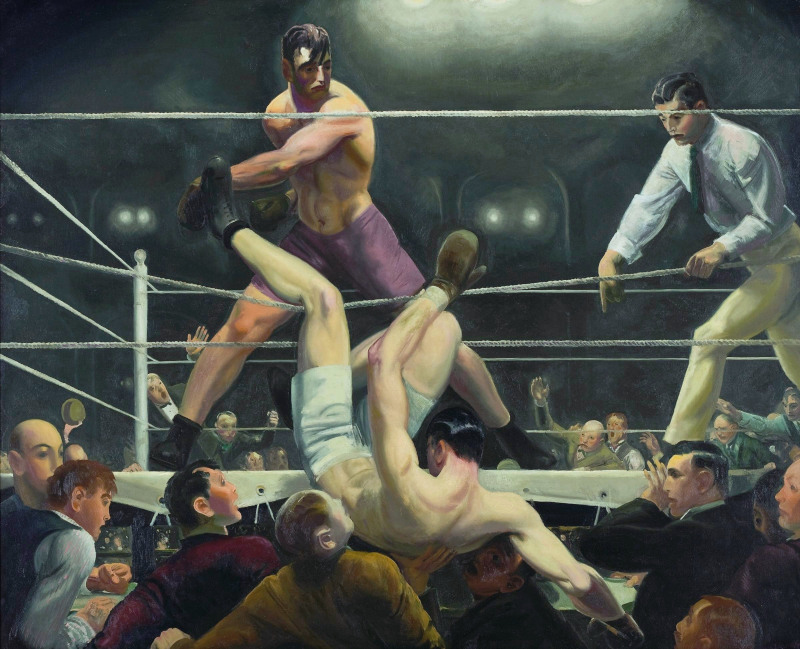 Dempsey and Firpo by George Bellows
Dempsey and Firpo by George Bellows
Anders Zorn
Paintings such as Summer Fun by Anders Zorn would capture the beauty and tranquility of the Scandinavian landscape. Zorn combined elements of Impressionism and Realism to deliver some detailed and stunning artworks, including many portraits, self portraits and figurative work. Zorn was also part of a period of success across this region at around the turn of the century which also included a number of artists from Finland, Denmark and Norway, alongside his native Sweden.
Albert Edelfelt
Albert Edelfelt was a Finnish-Swedish Realism artist, and one of a number of significant Realism artists to have come from Finland in the second half of the 19th century. He loved to capture the lives of local people and covered a variety of social classes, bringing a great variety to his work. There would be people hard at work, as was typical for the movement, but also others enjoying leisure time, plus church-goers. His depictions tended to be outdoor-based, with an abundance of light and detail, bringing these past times to life in a way that no other art movements could achieve in quite the same way.
Russia was a popular location for Realism at that time, and Edelfelt was tempted across to the country with a number of commissions which helped to widen his reputation. He was no-longer just a domestic, Finnish painter. That said, most of his success came from travelling around Finland, observing the stunning countryside and its people. This curiosity never left the artist, leading to an abundance of landscapes, portraits and detailed accounts of daily life right across this varied nation.
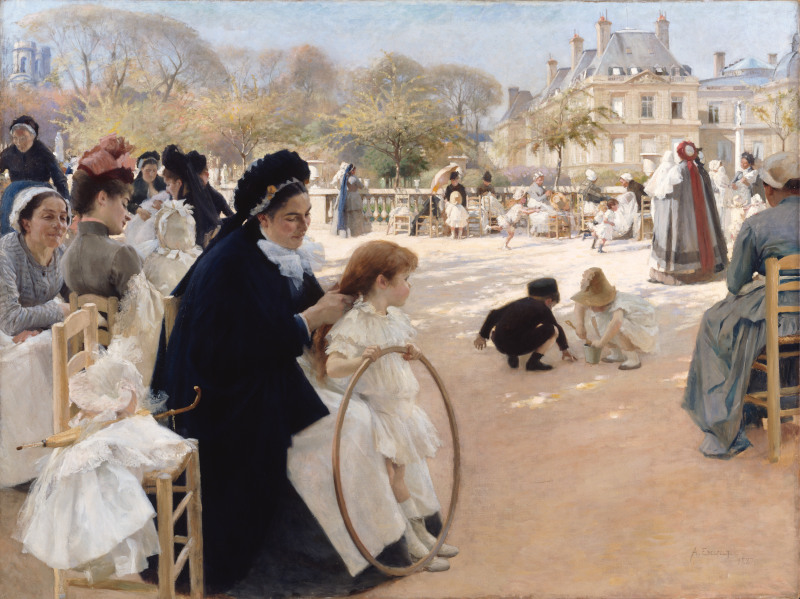 The Luxembourg Gardens, Paris by Albert Edelfelt
The Luxembourg Gardens, Paris by Albert Edelfelt
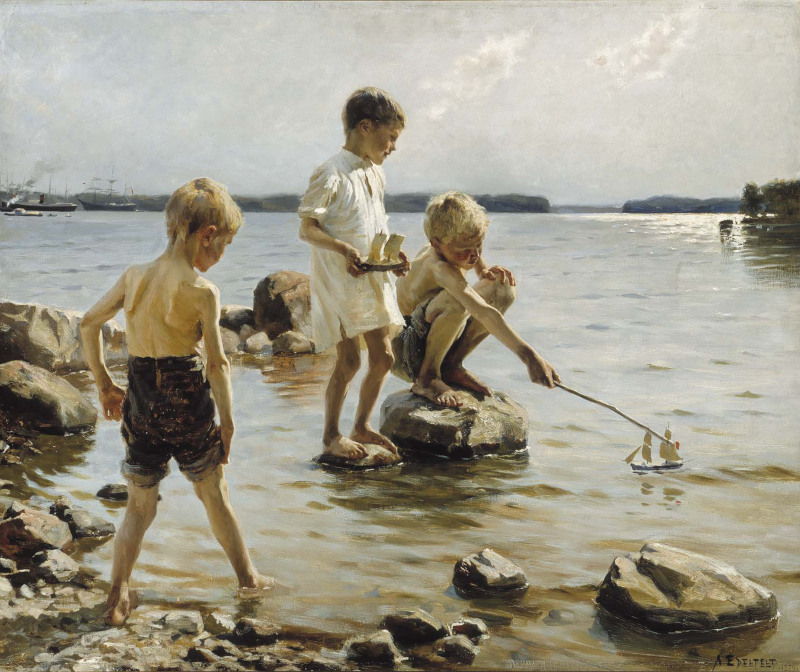 Boys Playing Upon the Shore by Albert Edelfelt
Boys Playing Upon the Shore by Albert Edelfelt
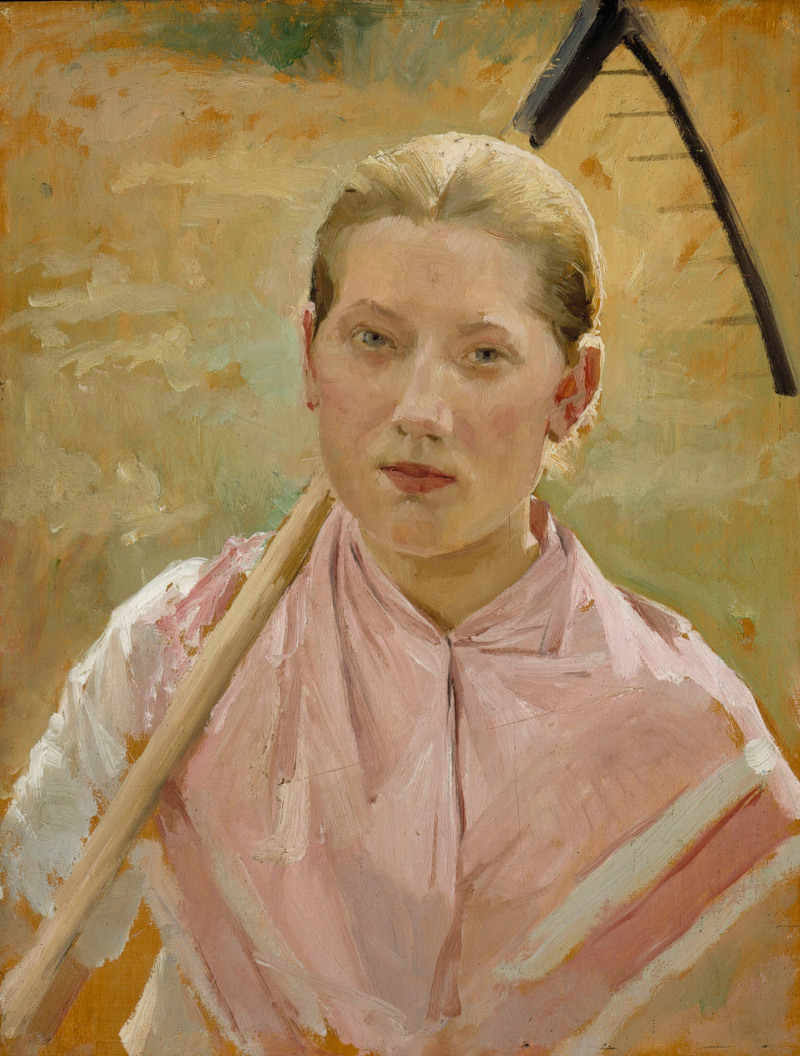 Girl with a Rake by Albert Edelfelt
Girl with a Rake by Albert Edelfelt
Helene Schjerfbeck
Helene Schjerfbeck was a Finnish female painter linked to the Realism movement. She produced a large number of domestic scenes, perhaps reflecting the role of women in society at that point. There was an honesty and accuracy to her work which was typical of Realism, and she also covered the lives of women more frequently than most of her male counterparts would do. One can draw comparisons with female Impressionists such as Morisot and Cassatt in that regard, but today Schjerfbeck is discussed as a prominent, highly skilled artist in her own right, with her gender being just an additional aspect to her achievements and artistic style.
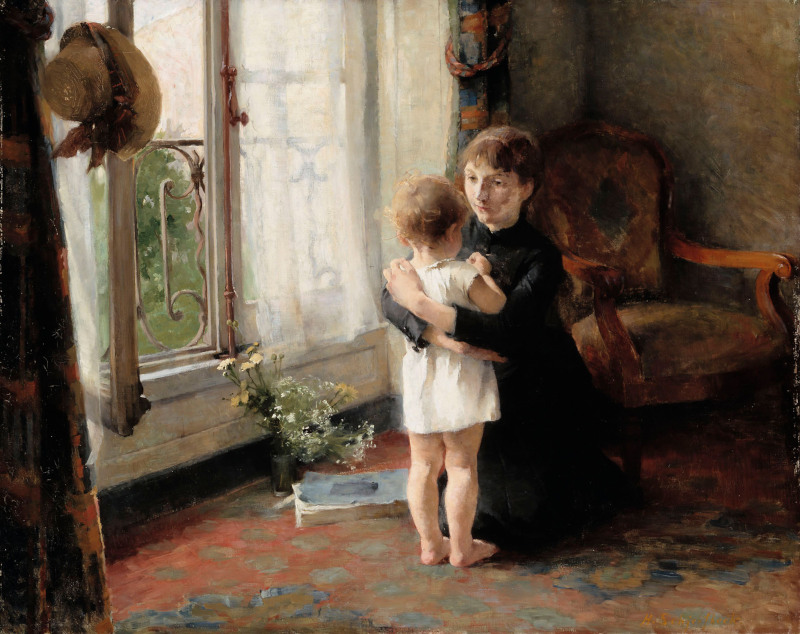 Mother and Child by Helene Schjerfbeck
Mother and Child by Helene Schjerfbeck
Pekka Halonen
Pekka Halonen was another successful Finnish painter whose style was closely related to the Realism art movement. Examples such as Pioneers in Karelia, as found below, honestly depicted life in Finland towards the end of the 19th century. Most of his scenes were based outdoors, capturing the beauty of the landscape in Finland, as well as the activities carried out by local people both at work and also in leisure time. The artist remains a major attraction within the permanent collections of a number of leading national art galleries and museums, and the detail found in his work has ensured continued popularity up to the present day.
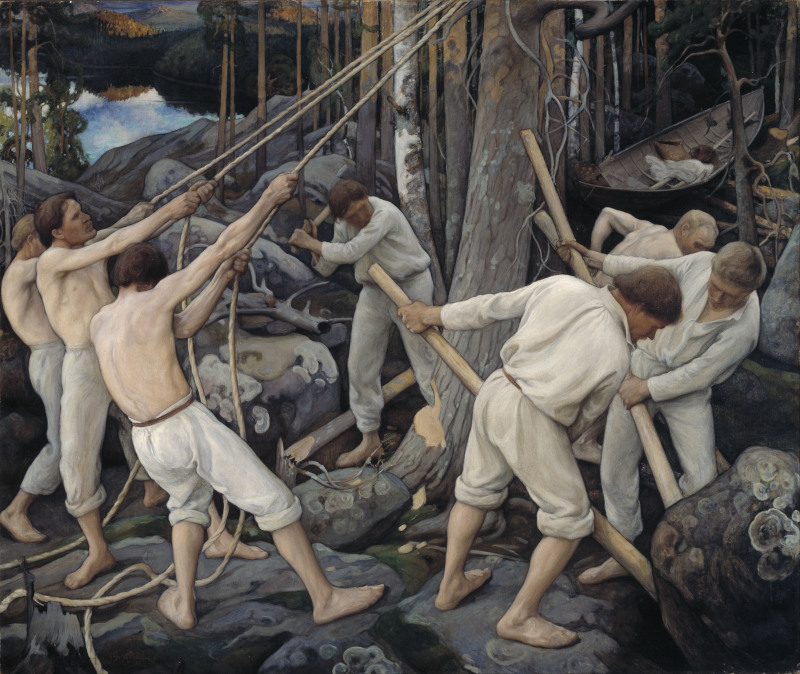 Pioneers in Karelia by Pekka Halonen
Pioneers in Karelia by Pekka Halonen
Jules Bastien-Lepage
In the latter part of the Realism movement, an offshoot would appear which became known as Naturalism. Jules Bastien-Lepage was a French painter who achieved considerable success within it, and examples such as October, 1878, as featured below, gives an indication of the connection between the two moveemnts. Despite the humble nature of the artist's subjects, often captured in simple rural-style clothing, he would also allow light to flood his scenes which avoided delivering a negative mood in his paintings. He tended to focus on individual portraits, or intimate works with just a few figures rather than more complex arrangements.
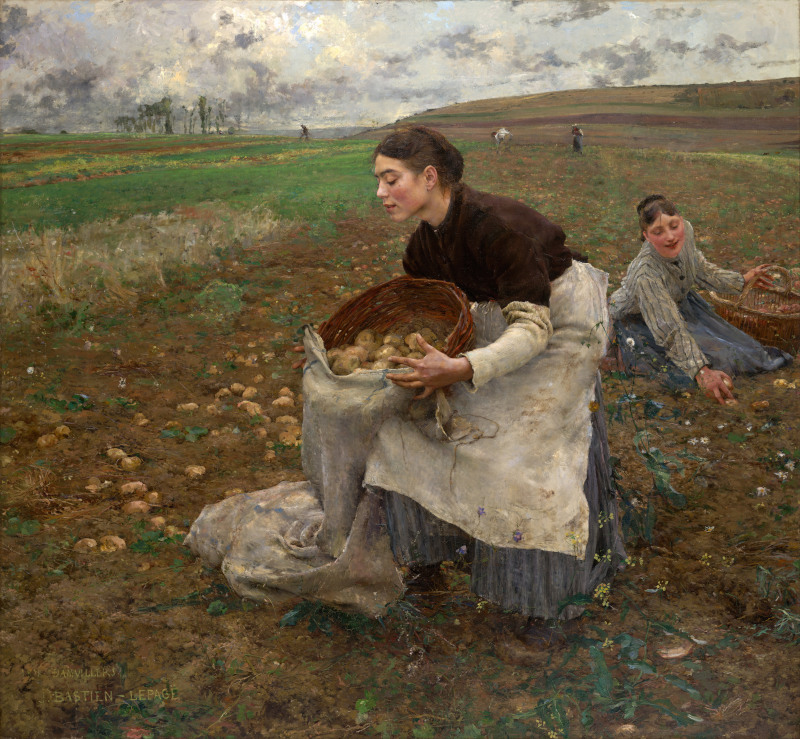 October, 1878 by Jules Bastien-Lepage
October, 1878 by Jules Bastien-Lepage
Jules Breton
Jules Breton was a 19th-century French naturalist artist who produced a number of stunning sunset paintings which captured a Romantic image of the working poor in rural France. Typically, the artist would capture figurative portraits of a small group of figures working in the fields, with a plain background sitting behind, combined with a dramatic use of lighting. The content is perfectly suited to the Realism movement, but his technical methods combined several different influences to create a truly unique oeuvre which has spread into the permanent collections of a number of notable French art galleries and museums.
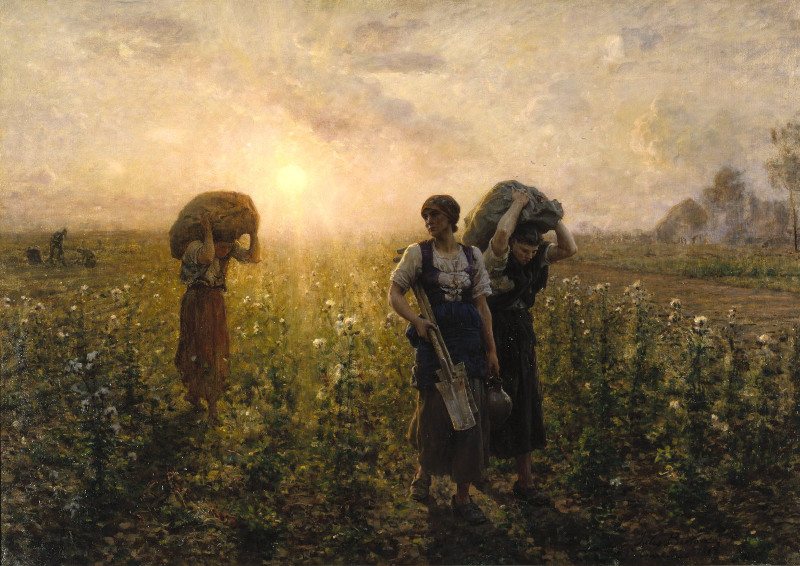 The End of the Working Day by Jules Breton
The End of the Working Day by Jules Breton
Vasily Surikov
Vasily Surikov was a history painter whose precise style reminded many of the Realism movement, which was also significant within Russian art at that time. His use of complex scenes on huge canvases, with large collections of figures in traditional clothing attracted a strong following and was deemed entirely suitable to 19th century art. Military scenes inspired a number of paintings, as well as other dramatic events in which emotions could be naturally incorporated into each artwork, often on a wide number of figures.
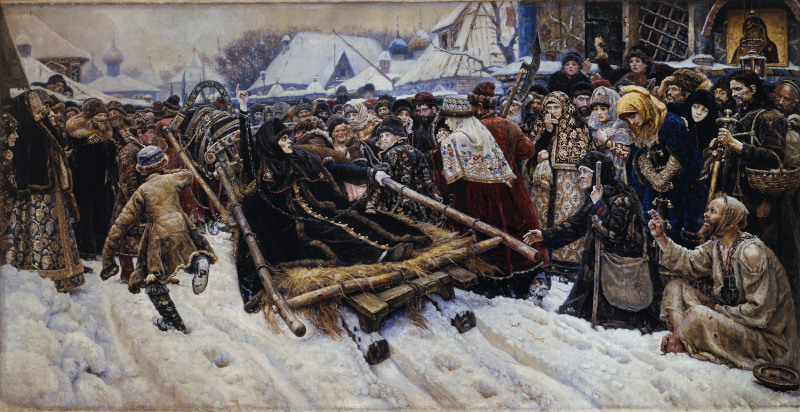 Boyarina Morozova by Vasily Surikov
Boyarina Morozova by Vasily Surikov
Illarion Pryanishnikov
Illarion Pryanishnikov helped to form the Russian group of Realism artists known as the Peredvizhniki. He produced large canvases filled with dozens of figures, capturing historical events and scenes of the working classes in rural regions. Many of his paintings were breathtaking, and represent the considerable qualities found within Russian art towards the end of the 19th century. His use of composition and perspective also gave a more dynamic look to many of these complex pieces.
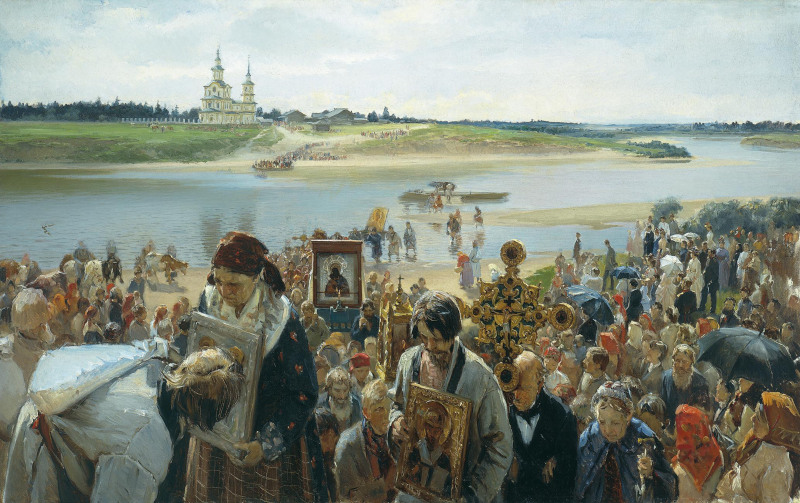 Easter Procession by Illarion Pryanishnikov
Easter Procession by Illarion Pryanishnikov
Konstantin Savitsky
Konstantin Savitsky was a Russian Realism painter from Taganrog who produced a number of highly complex figurative paintings that captured life in the country at that time. The focus would always be on the working and lower classes of society, giving an element of historical education to these impressive artworks. His attention to detail was extraordinary, and few would look to reproduce his work by hand because of the time that would be required for such complex projects. The advantage of this approach is that his paintings can hold our attention for an extended period, continually offering something new each time we observe them.
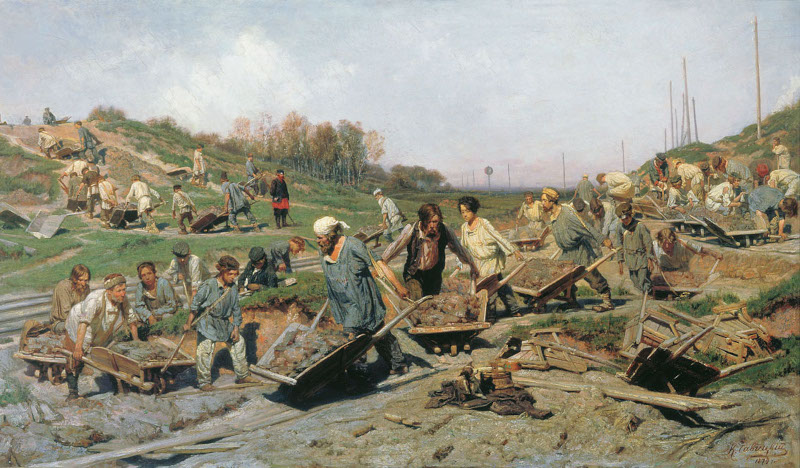 Repairing the Railroad by Konstantin Savitsky
Repairing the Railroad by Konstantin Savitsky
Ivan Shishkin
Ivan Shishkin was a 19th century Russian painter who appeared in the early stages of Russian Realism. He was a landscape painter who could replicate nature with an incredible level of accuracy, and most of his scenes were devoid of human activity, giving his paintings a more relaxed atmosphere than with some of the other artists mentioned in this article. Shishkin was particularly fond of trees within his works, and mastered this topic brilliantly, also able to replicate them within a variety of lighting conditions.
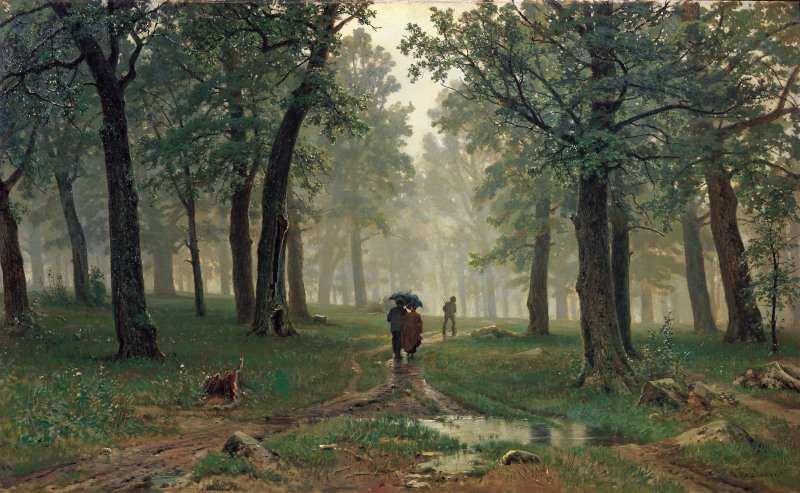 Rain in an Oak Forest by Ivan Shishkin
Rain in an Oak Forest by Ivan Shishkin



